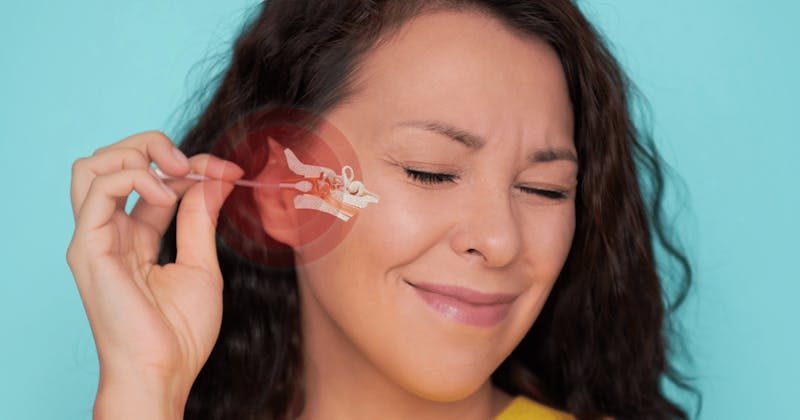
Some of the most frequent questions I am asked by patients are about earwax. Also called cerumen, it can build up to form a plug in the ear canal and cause hearing problems until it is removed. This excessive earwax accumulation, or cerumen impaction, is a problem that affects many people. Let’s address some of the most common questions below.
Why do people have earwax and how does it get there?
First, it is important to know that having some earwax is normal and even healthy. All ears make earwax; it only becomes a problem if a large amount builds up. Contrary to what many people believe, earwax is not caused by dirt getting into the ear and does not indicate any failure of hygiene. Instead, earwax is produced by secretions from special glands in the ear canal which mix with sloughed skin cells to form a protective coating. Think of it as something similar to lip balm for the ear. Its protective properties include repelling water to help prevent irritation of the skin surface and maintaining a good pH for antibacterial and antifungal effects.
Is it safe to clean my ears with a cotton swab?
Many well-intentioned people use cotton swabs to clean their ears, unaware of the risks that this practice can cause. You may have been taught to do this as part of your hygiene routine, like brushing your teeth. However, medical providers do not recommend putting cotton swabs, or any other objects, into your ears. Multiple problems can occur from cotton swab use, the most worrisome being injuries to the ear canal or eardrum. Even if you avoid inserting the cotton swab far into the ear, accidents can and do happen. Also, the cotton on the end of the swab may come off in the ear canal during use, which requires removal by a medical provider. In addition to these more serious pitfalls, cotton swab use for removing earwax can be counterproductive, creating a cerumen impaction in the ear that might not have developed otherwise. A person may see ear wax on a cotton swab after use but not realize that additional earwax has been pushed deeper into the ear.
Nature designed our ears to remove their own earwax, a process that works well for most people. Over time, the ear canal moves earwax in an outward direction until it comes out. However, for some people this process does not work the way it should, and earwax tends to build up. If someone is prone to cerumen impaction then periodic removal is needed, and home treatments for reducing earwax buildup may be helpful. Before trying any home treatment method, it is important to consult with your medical provider because home treatment is not safe for some people. Among those not advised to try at home treatments are individuals with a hole in the eardrum, ear tubes, prior ear surgery, or certain other abnormalities of the ears. Also, having diabetes, an impaired immune system, or a history of head or neck radiation could make home wax removal methods too risky. If you have any of these issues, see a medical provider for earwax needing removal.
What should I do if my ears make too much wax?
For people without the risk factors noted above, occasional use of softening eardrops is typically safe. Products that can be used include over the counter earwax softeners or mineral oil drops, hydrogen peroxide, or acetic acid. Keep in mind that when a large amount of earwax has already collected, adding drops may worsen hearing symptoms until the impaction is removed. Occasional home ear irrigation, using a bulb syringe and water to flush the ear canal, is also an option. Irrigation must be done gently, or the eardrum could be damaged. Use body temperature water to avoid temporary dizziness, which can happen if water is too cool or too warm. Irrigations can be performed several minutes after using softening drops, to make hard earwax easier to flush out. Use of rubbing alcohol and/or acetic acid drops after irrigation can reduce the risk of the water causing a swimmer’s ear infection.
If ear wax buildup is a concern, seeing your ENT provider for professional removal as needed or on a routine basis is recommended for safe and complete removal. If you have a history of cerumen impaction, or any current symptoms that might suggest impacted cerumen, talk to your ENT provider to discuss what treatment plan is best for you.

